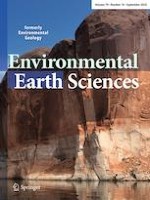01-09-2020 | Original Article
Investigation into microscopic mechanisms of anisotropic saturated permeability of undisturbed Q2 loess
Published in: Environmental Earth Sciences | Issue 18/2020
Log inActivate our intelligent search to find suitable subject content or patents.
Select sections of text to find matching patents with Artificial Intelligence. powered by
Select sections of text to find additional relevant content using AI-assisted search. powered by
